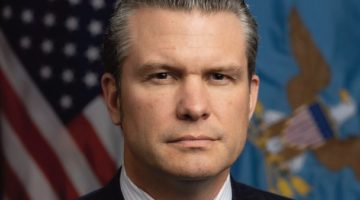 MIAMI GARDENS — With Miami Dolphins owner Stephen Ross passing around a new game plan to renovate Sun Life Stadium, the predominantly black community that surrounds the facility is gearing up to play yet another round of defense.
MIAMI GARDENS — With Miami Dolphins owner Stephen Ross passing around a new game plan to renovate Sun Life Stadium, the predominantly black community that surrounds the facility is gearing up to play yet another round of defense.
Ross said earlier this month that he would spend his own money – some $350 million – to renovate the 27-year-old stadium. The goal is to get the stadium in Super Bowl condition so that it could attract the National Football League’s biggest game, as well as other top sports and entertainment events, Ross has said.
But, in exchange, Ross wants to get out of a deal then owner Joe Robbie made with the county in 1984, when the team signed a 99-year agreement to lease the stadium from the county at a cost of $1 per year. With that provision gone, the Dolphins no longer would pay property taxes to Miami Gardens – an annual bill of about $1 million. It also would no longer pay for other county services for schools and libraries, resulting in annual savings to the team of nearly $4 million.
But Miami Gardens cannot afford to lose its biggest taxpayer, which would happen if Ross gets his way, community leaders say.
“I told them I was concerned about the impact that it would have on the city of Miami Gardens,” said Miami-Dade Commissioner Barbara Jordan, who recently met with stadium leaders. “They indicated they would find a way to make Miami Gardens whole.”
Dolphins CEO Tom Garfinkel said last week that the team is talking to Jordan, as well as to Miami Gardens Mayor Oliver Gilbert, to discuss revenue options for the city.
“The city – they are our neighbors,” Garfinkel said. “We care about them.” The Miami Heat and the Miami Marlins, like Florida’s other pro-sports teams, don’t pay property taxes because they operate government-owned facilities. The Dolphins want the same deal. “It’s a matter of fairness,” Garfinkel said.
The kind of financial investment that Ross is preparing to make will have a positive economic impact in the community, he said. Miami Gardens would share in the increased revenue that would be generated from a renovated stadium attracting Super Bowl games, college championship games and concerts, he added.
The goal, Garfinkel said, is to come up with a solution that works best for everybody. “When you invest that kind of money, everybody wins,” he said.
Jordan said she has to see the specifics before she can endorse Ross’ proposal.
“I don’t know of any commissioner – if this would impact their city the way it impacts Miami Gardens – who would not make sure to protect the city’s interest,” Jordan said.
Jordan and Gilbert also say that the Dolphins proposal has to guarantee that the revenue the city currently is receiving through property taxes will be replaced in perpetuity.
Gilbert says the team should be willing to get the community’s reaction, as well. “Any proposal will be taken to the public,” Gilbert said. “We will need to talk to people and get their input. I don’t think the city can sign off or would sign off on anything without it.”
Gilbert said an ongoing dialogue will continue between the city and the Dolphins management.
The community’s inclusion, said community activist Betty Ferguson, is crucial. It is not the first time the two sides’ concepts for the stadium have clashed.
Beginning in 1984, Ferguson helped lead three groups of homeowner associations in a challenge to then Dolphins owner Joe Robbie, who negotiated with the county to build the stadium off Northwest 27th Avenue and Miami Gardens Drive in the North Dade Community – an area that would not become a city until nearly 20 years later, in 2003.
Three North Dade homeowner associations were concerned that Robbie’s plans for a stadium and a sprawling sports and entertainment complex development would adversely affect the community. The groups complained of potential over-development and traffic gridlock.
“We didn’t really think that we could make them go away,” Ferguson said last week, “but we knew we had to stand up and insist on some protections.”The homeowners sued and got some concessions, Ferguson said.
“Look at the wall between the homes on the south side of the stadium and the parking lots. That wall would not have been there if we had not included that in our lawsuit,” said Ferguson, who was later elected a county commissioner. “They had to put in a walking trail outside of that wall. We got some things done in terms of the widening and improvement of 27th Avenue and 199th Street and the exit from the [Florida’s] Turnpike that goes into stadium property.”
The community and new stadium owner Wayne Huizenga also clashed when efforts were under way to make the community a city. Huizenga opposed incorporation and successfully lobbied against what was to be called the town of Destiny.
Incorporation leaders were able to get past the opposition by signing off on an unusual agreement. Even though the stadium land was no longer in unincorporated Miami-Dade County but within the boundaries of the new city, incorporation leaders agreed to let the county keep control of zoning matters for the stadium and its immediate environs – 90 acres in all – through 2017.
But, said Jordan, who represents the area in the county commission, though stadium owners and the community have not always agreed on every issue, the relationship has not been without benefits to Miami Gardens.
“The stadium has been a positive force in the community: The city has a major national football team and the stadium has put Miami Gardens on the national [TV],” Jordan said. “The team is a partner in the community. The players come out to the schools and do wonderful things. They participate in our internship program.
“But this is not about whether or not the Dolphins have been a good community partner,” Jordan said, noting that under Ross’ proposal the city could lose its largest taxpayer. “The city is wanting to make sure those resources are protected in perpetuity. I want to know exactly how that is going to happen.”












No Comment